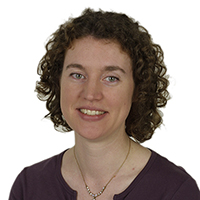Happy birthday, Science in School! Editorial article

Photolab
During the past five years we have published 350 articles, on topics ranging from particle physics and astronomy, via climate change, earthquakes and spectrometry, to evolution, biodiversity and diabetes. Many of those articles have been translated for publication on our website – producing a further 788 articles in 28 European languages.
Likewise, our readership continues to grow and grow: about 15 000 copies of the English-language print journal are distributed across 41 European countries, and our website receives well over 30 000 visitors from across the world every month – a figure that continues to rise. Science in School is read not only by teachers, but also by teacher trainers, scientists and many others who are interested in science education.
Perhaps you, as one of our readers, have wondered who is behind Science in School? Who makes it possible for science educators across the world to share inspiring teaching ideas or keep up-to-date with cutting-edge science – for free?
First, there are the publishers of Science in School: the eight European inter-governmental research organisations that make up EIROforum. The idea for the journal was born of EIROforum’s commitment to supporting and improving science education in Europe, and EIROforum has funded the journal right from the beginning. From 2005 to 2008, there was also generous support from the European Commission.
Francesco Romanelli, current chairman of EIROforum, explains: “EIROforum recognises the importance of science education, both to train the next generation of scientists and to ensure a scientifically literate public. Teachers are a vital element in this process, and we are proud and happy to support them with Science in School.”
On a day-to-day level, the journal is run by a two-person editorial team. Before moving into publishing, both my colleague Dr Marlene Rau and I spent several years in research: Marlene in developmental biology, and I in insect ecology. We source, edit and sometimes write the articles; organise the copy-editing, layout, printing, distribution and translation; maintain the website; publicise the journal; sell advertisements and generally keep everything running. It’s a lot of work but enormous fun.
Of course, none of this would be possible without a great deal of voluntary help. We currently have 76 referees – European science teachers who help us decide which articles to publish and how they could be improved. More than 250 scientists and teachers have volunteered to translate articles into languages from Albanian and German to Portuguese and Ukrainian. And of course there are the authors, who share their teaching ideas and scientific knowledge with our readers.
We would like to extend our grateful thanks to these people and to everyone else involved. We look forward to the next five years of Science in School!





